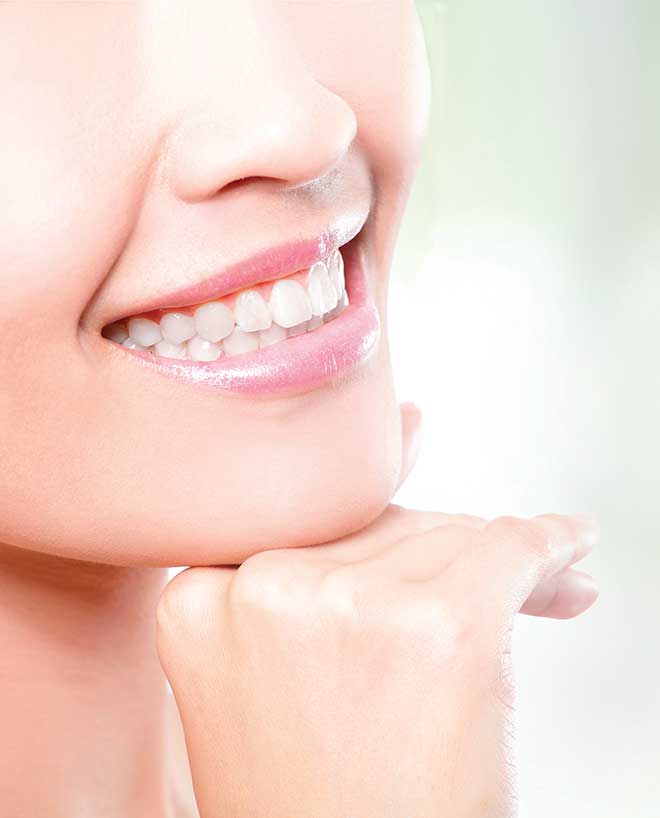“Crooked or yellow teeth can negatively affect a person’s self-esteem and confidence,” says Dr. Robert Rothenberg, a dentist in Manchester. Getting a dazzling smile doesn’t necessarily require facing the drill, however, thanks to advances in cosmetic dentistry that now allow for pain-free corrections. “Whether you are on the high or low end of the budget spectrum, there are always options for improving appearance and function,” he notes.
The most common fix is teeth whitening, an $11 billion industry that has soared by more than 300 percent since 1996, according to the American Academy of Cosmetic Dentistry. It was instantly appealing to patients because over time, teeth become stained by foods, beverages, medications and smoking. Bleaching with peroxide-based agents, the premise of whitening, can restore teeth to a brighter white without the use of a drill.
The chemicals in at-home whitening kits are typically 3 to 20 percent peroxide, but those used by dentists contain up to 43 percent peroxide. Dentists also can use heat, light or a combination of both to intensify the whitening process. It’s not uncommon for teeth to get three to eight shades brighter in only a few office visits, Rothenberg notes. Another option is to have a dentist create a custom tray to fit your mouth and provide a whitening gel for use at home. It takes longer to achieve the desired results, typically several weeks, but cuts costs by half or more compared to whitening at the dental office. “All whitening options, when done properly, create no damage to the tooth structure while brightening the enamel,” Rothenberg says.
Teeth that need more than whitening may benefit from another drill-free procedure, Lumineers. Covering teeth with these thin porcelain laminates, corrects chips, aligns crooked teeth, reshapes small teeth and eliminates gaps. While traditional veneers are thick and require permanent removal of some tooth structure for a good fit, Lumineers are nearly as thin as a contact lens and are attached over the existing tooth, which doesn’t require anesthesia or drilling. “It’s not invasive, and it lasts a long time,” Rothenberg says.
The costs for veneers and Lumineers are about the same, averaging about $1,000 per tooth. Although the procedure can be performed on a single misshapen tooth, most patients have between eight and 12 teeth covered for a more appealing smile, Rothenberg says. In the case of missing or decaying teeth, more complicated procedures may be necessary, but dentists who use lasers rather than drills can reduce the discomfort associated with fillings, crowns, bridges and implants, Rothenberg notes. “If you use a drill, the potential is there to cause pain, require anesthetic and to remove more tooth structure than is necessary.”








